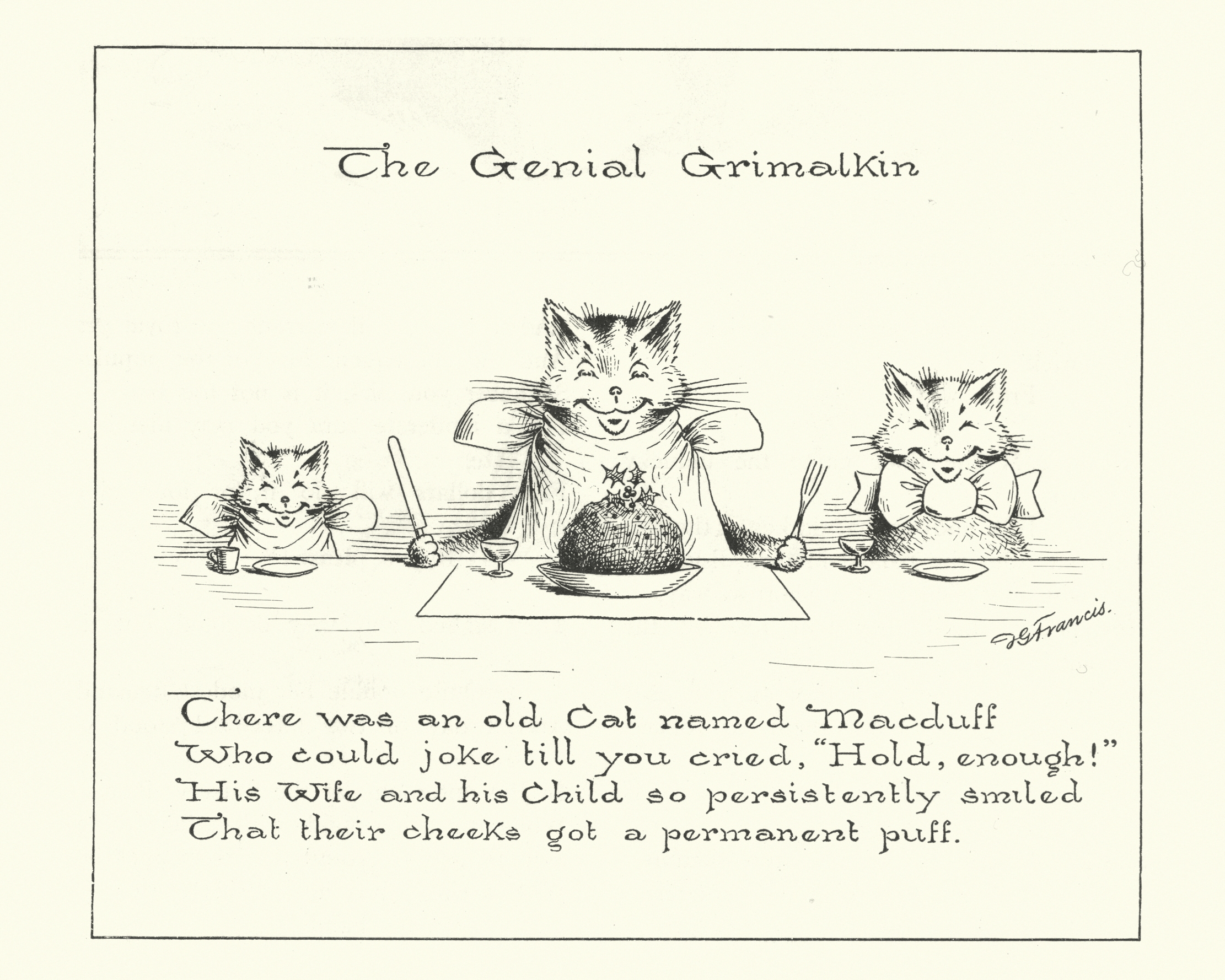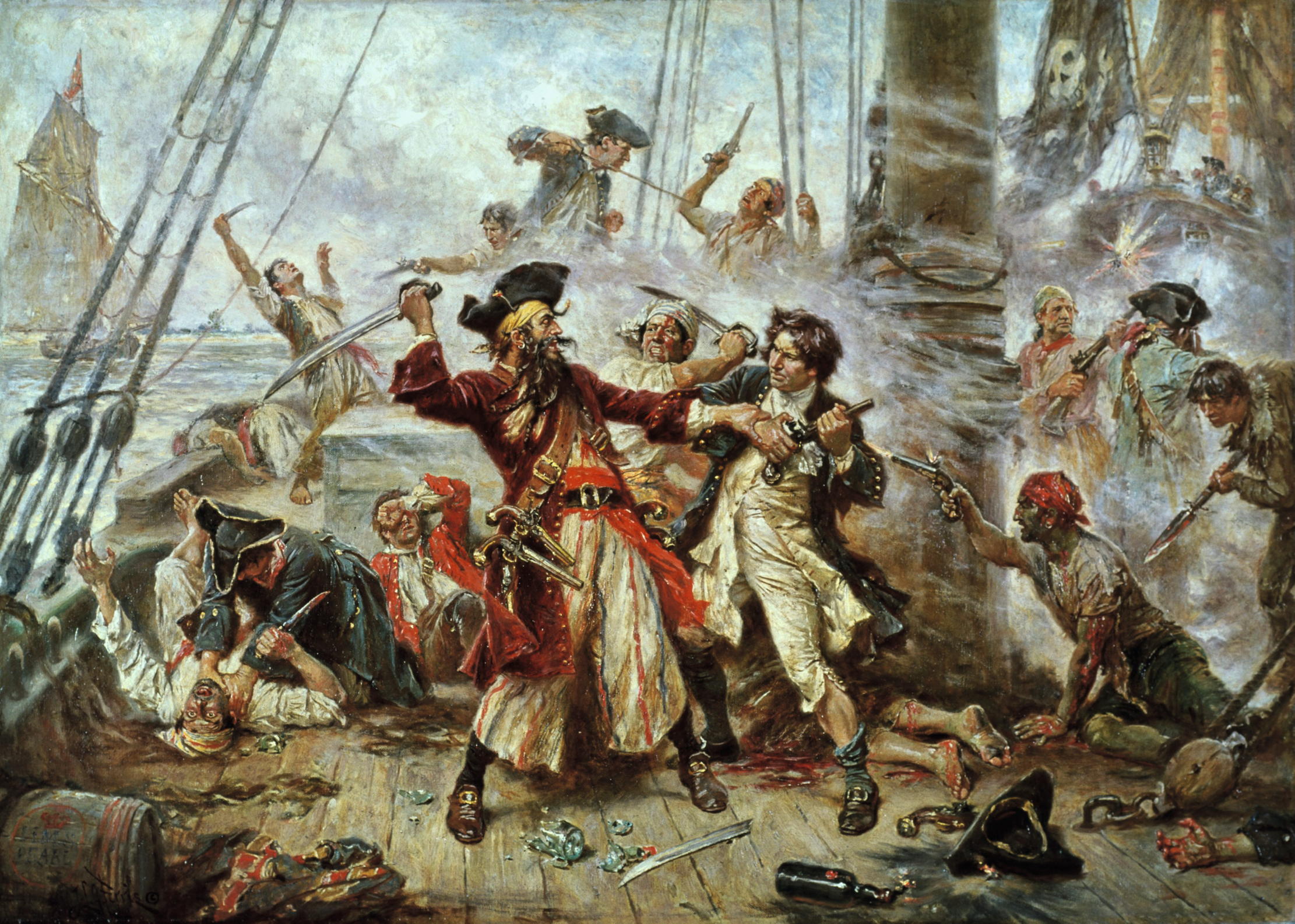Curious Question: Did the limerick originate in Limerick?
Before workers wasted time scrolling Twitter or Instagram, they wasted their time writing limericks.


Outside Limerick’s oldest bar, the White House in O’Connell Street, there is a plaque on which is written: 'The Limerick is furtive and mean;/ you must keep her in close quarantine,/ or she sneaks up to the slums/ and promptly becomes/ disorderly, drunk and obscene'. With its five line stanza and an AABBA rhyming scheme it is immediately recognisable as a form of poetry that is synonymous with the Irish city.
However, there are examples of what we now know as the limerick form well before the Irish appropriated it. One of the earliest was written by Thomas Aquinas in the 13th century, a Latin devotional prayer using the AABBA rhyming scheme, while Iago’s drinking song, the Canakin clink drinking song, found in Shakespeare’s Othello Act 2, Scene 3 (1603) is another. The writer whose name is indelibly associated with the genre is Edward Lear, whose The Book of Nonsense (1846) charmed its readers, young and old, with a collection of humorous five-lined poems.
Lear went a long way towards establishing the normal format of a limerick with the first, second, and fifth lines consisting of three feet of three syllables and sharing the same rhyme, while the third and fourth lines are shorter, consisting of two feet of three syllables with their own rhyme. The first American examples appeared in Charles Leland’s Ye Book of Copperheads (1863). Neither Lear nor Leland, though, called them limericks.
Limericks seem to have been sung to a popular tune, Will You come up to Limerick?, suggested by a newspaper article from St John in New Brunswick, Canada, in 1880 as the perfect accompaniment to a five line poem using the AABBA rhyming scheme it had printed. However, it was not until May 1896 that anyone consciously called the poems limericks, Aubrey Beardsley writing in a letter that 'I have tried to amuse myself writing limericks about my trouble'.
Beardsley’s use of the term was the culmination of the campaign waged by the Irish Literary Revival, led by W B Yeats and George Sigerson, to promote the claims of the 18th-century Maigue Poets, Seán O Tuama and Aindrias MacCraith, rather than Edward Lear as the true proponents of the poetic form. As the poets came from Croom in Co Limerick, the revivalists called their poems 'limericks', a term the British initially reserved for the more risqué versions of the poem. In turn, Fr Russell, editor of The Irish Monthly, coined the word 'learic' to denote the cleaner versions. For the British public, though, such pedantic nitpicking was too abstruse and 'limerick' stuck.

One of the attractions of the limerick is that it does not require any poetic genius to come up with a passable version, especially if the first four lines are already provided. This was the concept that made 1907 a golden year for amateur limerick writers, magazines and newspapers offering cash prizes to an entrant who, in the opinion of the judges, provided the best concluding line. The first magazine to launch a competition, in January of that year, was the London Opinion and Truth, which also claimed a place in the nation’s consciousness with its iconic Kitchener poster on the front page of its edition of September 5, 1914.
By September 1907 the limerick craze had swept across the country to such an extent that it was attracting the attention of a bemused foreign press. The New York Times reported that 'millions [were] competing for prizes offered by almost every popular paper in England' and that a prize the equivalent to $1,225 was offered for ONE SILLY LINE (their capitals). 'Eight weeklies', it noted, 'paid out $61,985 in a single week in their competitions'.
Exquisite houses, the beauty of Nature, and how to get the most from your life, straight to your inbox.
Advertisers soon jumped on the bandwagon, offering even larger prizes, such as a freehold property or a lifetime annuity, for completing the last line of a limerick plugging a certain product. The scale of the mania can be judged from a statement made by the Postmaster-General in 1908 to Parliament in which he reported that the sale of sixpenny postal orders, the usual competition entry fee, had risen in 1907 from less than a million to over 11 million with nearly 6 million sold in August alone.
Adherents of the 'insidious yet rapid growth of the limerick craze' claimed it to be 'the best mental exercise the public could possibly have, and people are becoming smarter in their solutions each day'. Enthusiasts were keen to share their techniques. One would write 20 solutions and then, after a good night’s sleep, would 'mercilessly dissect each one', while another recommended committing the first four lines to memory and then retiring to the quietest room in the house and letting 'his mind wander where it will'. After about an hour’s contemplation, 'the suitable line literally jumps into my mental vision. I never try to alter it afterwards, and I never post off more than one solution'.
Some tried a collaborative approach. One correspondent described how the whole family, or at least the male members, assembled around the dining room table and 'each member, from the schoolboy to the elder brother in business, essays a solution, which paterfamilias duly takes note of. The concerted solution', the writer avers, 'is generally most satisfactory'.
Completing the limerick puzzle became the Edwardian equivalent of idly surfing the internet in the workplace, one city manager reporting that he constantly detected his clerks 'in the act of surreptitiously scribbling on their blotting pads'. Some of his clients appeared so distracted that he was certain that their minds were preoccupied on finding the perfect solution. While the limerick mania might have impacted some forms of commercial activity, for one city bookseller it was a godsend as copies of rhyming dictionaries were flying off the shelf.
Limerick enthusiasts seemed to travel around London oblivious to their surroundings. A bus conductor reported that two gentlemen on the Fleet Street to Marble Arch bus were so absorbed in discussing the merits of a solution that they missed their stop at Charing Cross and blamed him for their oversight. On the railways a ticket collector observed that 'quite a number of people every day miss trains and appointments through becoming temporarily lost in the maze of possible solutions'. Fortunately, for the travelling public 'our guards and engine drivers do not as yet appear to have fallen victims to the craze', he wryly observed.
Like the stalwart railway employees, not everybody was swept up in the limerick mania, with an editorial in The Sphere on October 9, 1907, denouncing the 'craze which must be doing a great deal of harm to large masses of people'. With one newspaper boasting of receiving 169,000 entries, questions began to be asked as to how the competitions could be fairly judged and whether they were really little more than lotteries with the winners selected by chance, putting the competitions into dangerous legal territory.
Some years earlier competitions requiring entrants to supply the missing word in a sentence had been banned as they were viewed as gambling. What saved the limerick competitions from that fate was that it was argued that the completion of a limerick required 'the exercise of a certain degree of mental ability'.
However, the tide was turning. Punch magazine, that bellwether of public opinion, noted that the address of one winner was the London County Asylum, adding, superfluously, that 'comment would be superfluous'. By the end of 1907 the craze had disappeared as quickly as it had surfaced, but to this day the limerick remains one of the nation’s most popular types of poem.

Curious Questions: Why do we still love pirate stories, 300 years on from Blackbeard?
Tales of swashbuckling pirates have entertained audiences for years, inspired by real-life British men and women, says Jack Watkins.

Curious Questions: Why is race walking an Olympic sport?
The history of the Olympics is full of curious events which only come to prominence once every four years. Martin

Curious Questions: Why do all of Britain's dolphins and whales belong to the King?
More species of whale, dolphin and porpoise can be spotted in the UK than anywhere else in northern Europe and
After graduating in Classics from Trinity College Cambridge and a 38 year career in the financial services sector in the City of London, Martin Fone started blogging and writing on a freelance basis as he slipped into retirement. He has developed a fearless passion for investigating the quirks and oddities of life and discovering the answers to questions most of us never even think to ask. A voracious reader, a keen but distinctly amateur gardener, and a gin enthusiast, Martin lives with his wife in Surrey. He has written five books, the latest of which is More Curious Questions.
